Two Weeks in Japan: An Unforgettable Adventure
Growing up in the ’90s and early 2000s, anime was a huge part of my life. It all started with classics like Cowboy Bebop and Dragon Ball Z. I remember staying up late on weekends, completely immersed, binge watching episode after episode. While I don’t keep up with most new releases (aside from Attack on Titan), I still make time for films like Your Name, Weathering With You, and anything from Studio Ghibli.
Video games were just as influential. Titles like Mario, Zelda, and Final Fantasy shaped my childhood, but Final Fantasy VII had the biggest impact. Experiencing that story in middle school felt like witnessing an epic movie trilogy unfold in video game form—something unheard of at the time, especially on such a grand scale.
Then in 2003, I watched Lost in Translation, a film about an aging American actor navigating Tokyo while promoting Suntory whisky. As he slowly adjusts to the cultural differences, he begins to embrace the experience, forming an unlikely connection along the way. I watched it over and over, captivated by the idea of being dropped into a completely foreign country—free to explore, get lost, and experience something entirely different.
Japanese culture left a lasting mark on my adolescence, and I always dreamed of visiting one day. I often imagined myself in that iconic karaoke scene from Lost in Translation—running around Tokyo, carefree, whiskey in hand, making memories with strangers.
After 21 years of dreaming, I finally set foot in Japan. This blog is a deep dive into my experience—featuring unique observations, memorable moments, and reflections on the incredible places I visited. Along the way, I’ll share insights, travel tips, and everything I wish I had known before the trip. Whether you’re planning your own adventure or just curious about Japan, I hope you enjoy the journey!
Public Transportation
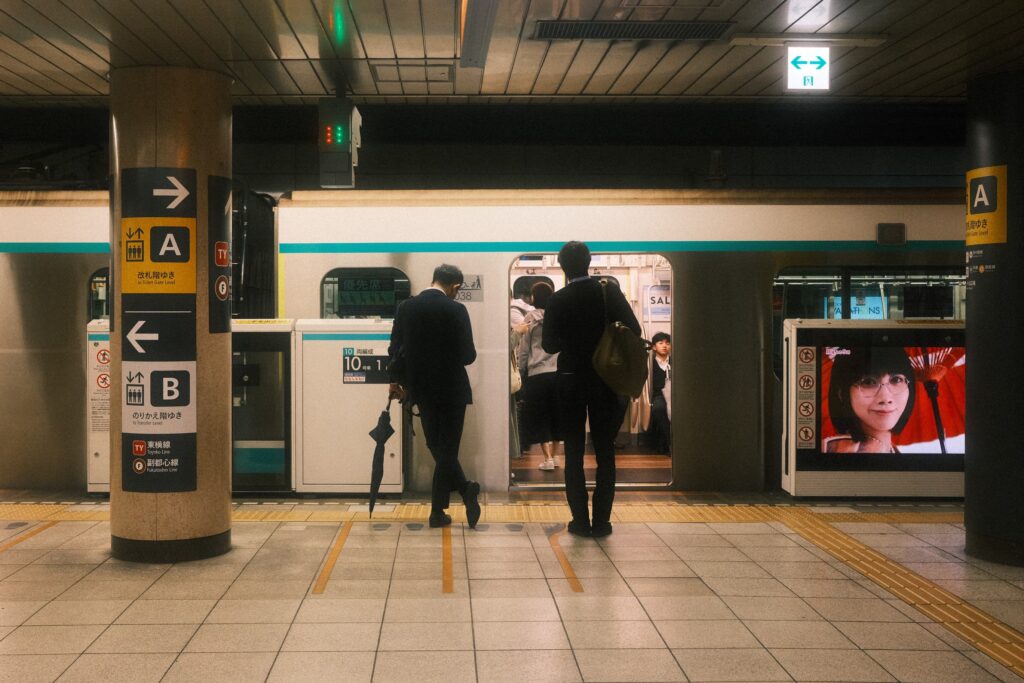
Japan’s public transportation system is truly impressive. It took us a little time to get the hang of it, but once we did, the efficiency was undeniable. Japan sets the benchmark for public transit—seamless, affordable, and remarkably fast. With an extensive network of trains and subways, getting around—especially in cities like Tokyo and Osaka—is incredibly convenient, with most destinations just a short walk from a station.
Using a Suica card in Apple Wallet made everything seamless. You can load funds instantly from an Apple Card and simply scan your phone at the terminal gates. Rush hour can get a bit crowded, but it’s nothing unbearable—unless you’re trying to haul large check-in luggage, in which case, you might find yourself in a tight squeeze.
Shinkansen
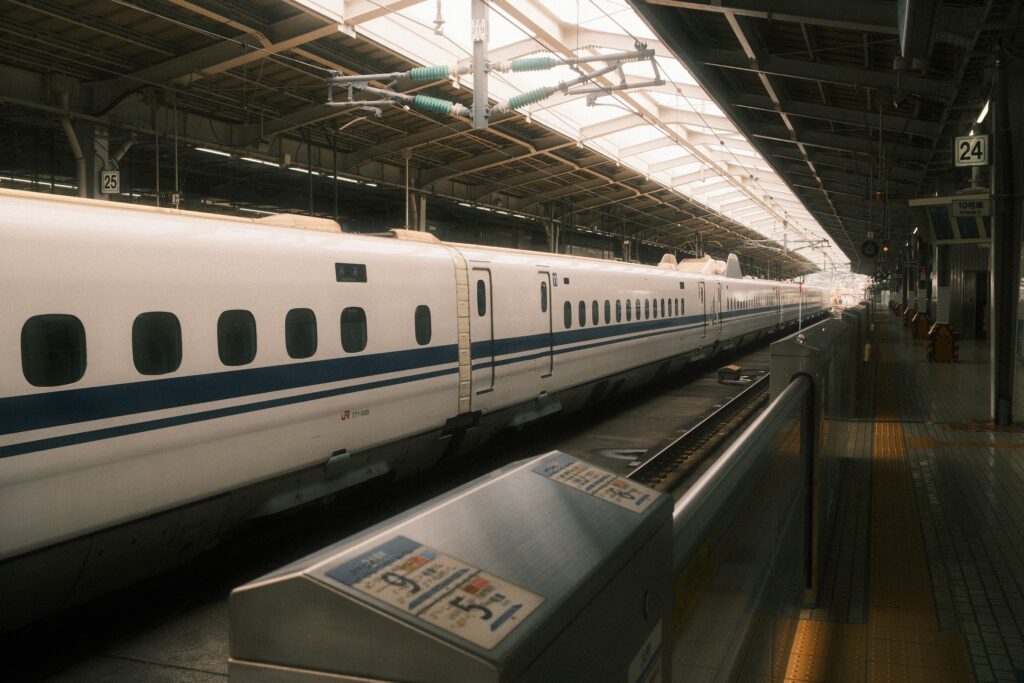
For longer distances, the Shinkansen was an unforgettable experience. We took the bullet train from Tokyo to Kyoto and later from Osaka back to Tokyo. Not only did we get to ride one of the world’s fastest trains, but we also caught glimpses of Japan’s countryside, which, surprisingly, reminded me a lot of Kentucky’s rolling landscapes.
The Shinkansen itself feels like air travel but with more legroom. Sitting back, sipping an ice-cold Asahi Super Dry, and watching the scenery blur by was a highlight of the journey. You’ll have plenty of time to charge your devices and plan your itinerary before arriving at your destination. Just be sure to grab snacks from a convenience store or vending machine before departure—unless you’re in Green Car, which offers an onboard menu.
The Shinkansen departs exactly on time and it won’t wait. Give yourself ample time to find the terminal, go through the gates, and pick up any last-minute essentials. Trust me, an stress-free boarding makes the ride all the more enjoyable.
Respect & Passion
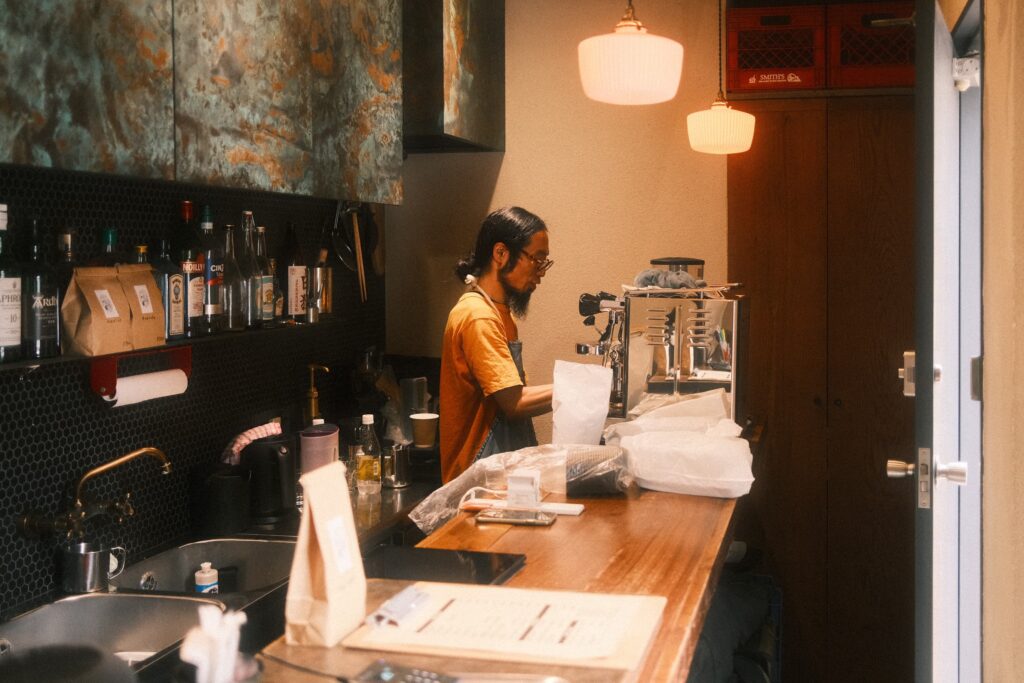
During my two weeks in Japan, I kept notes on observations and interactions with people. The most striking cultural differences I noticed—especially compared to the U.S.—were the deep-rooted sense of respect and the passion people have for their work.
Respect is ingrained in daily life. Everywhere I went, people were considerate and polite. On trains, seats were readily offered to the elderly and pregnant women. I never once saw anyone acting out, arguing, or causing a scene. Even at a baseball game, fans showed no hostility toward the opposing team’s supporters—something I’ll touch on more later.
At the same time, there’s an undeniable passion for work, no matter the job. The streets are impressively clean, and I even witnessed a sanitation worker photographing trash before carefully picking it up—almost as if he took personal pride in the process. At McDonald’s, employees seemed genuinely happy to be there, going so far as to collect trays and dispose of trash for customers. Public restrooms, from subway stations to convenience stores, were spotless. The level of care and attention to detail was impeccable (Perfect Days is a great film that beautifully captures this mindset).
I imagine wages for service jobs in Japan might be better than in the U.S., but beyond pay, there seems to be a cultural difference in attitude. While Americans often prioritize individualism, people in Japan seem more self-aware and community-focused. And if language ever became a barrier, they had no hesitation pulling out Google Translate to bridge the gap.
Convenience Stores
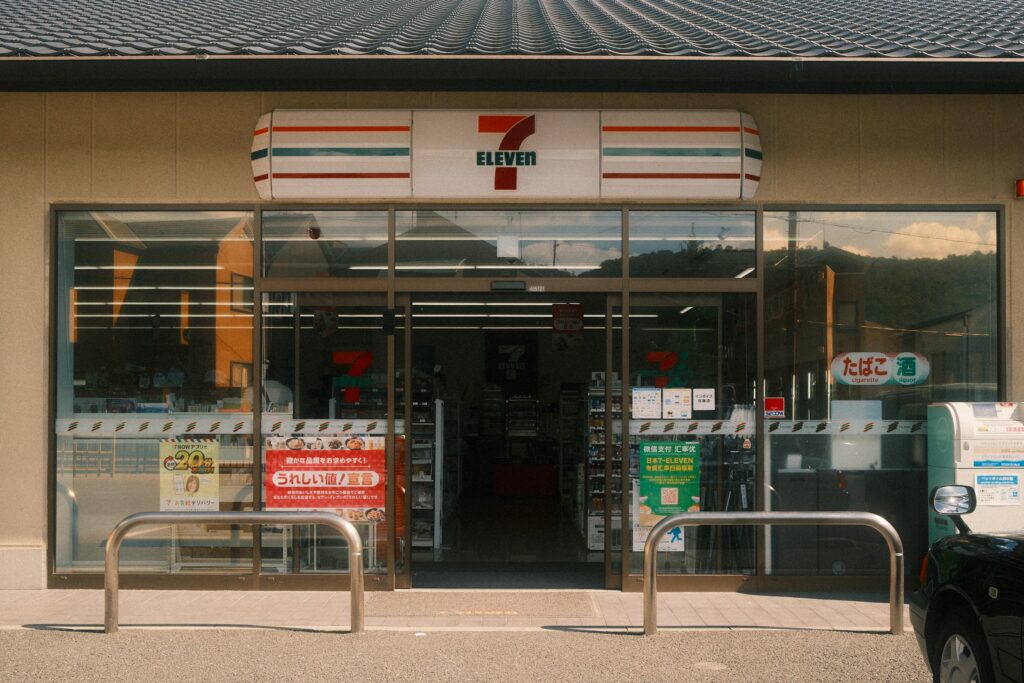
Convenience stores are everywhere in Japan. Whether it’s 7-Eleven, Family Mart, or Lawson, you’ll find them scattered across every city, making them an essential stop for both locals and travelers.
These stores offer far more than just snacks. You can pick up essentials like umbrellas (handy if your hotel runs out), medicine, and other miscellaneous travel necessities. Hungry? Try Karaage-kun fried chicken from Lawson—or grab a whiskey highball, one of Japan’s most popular canned drinks. Need cash? ATMs are readily available, and unlike in the U.S., they don’t feel sketchy to use.
Japan’s convenience stores live up to their name—offering quality, variety, and accessibility at every turn.
Tokyo
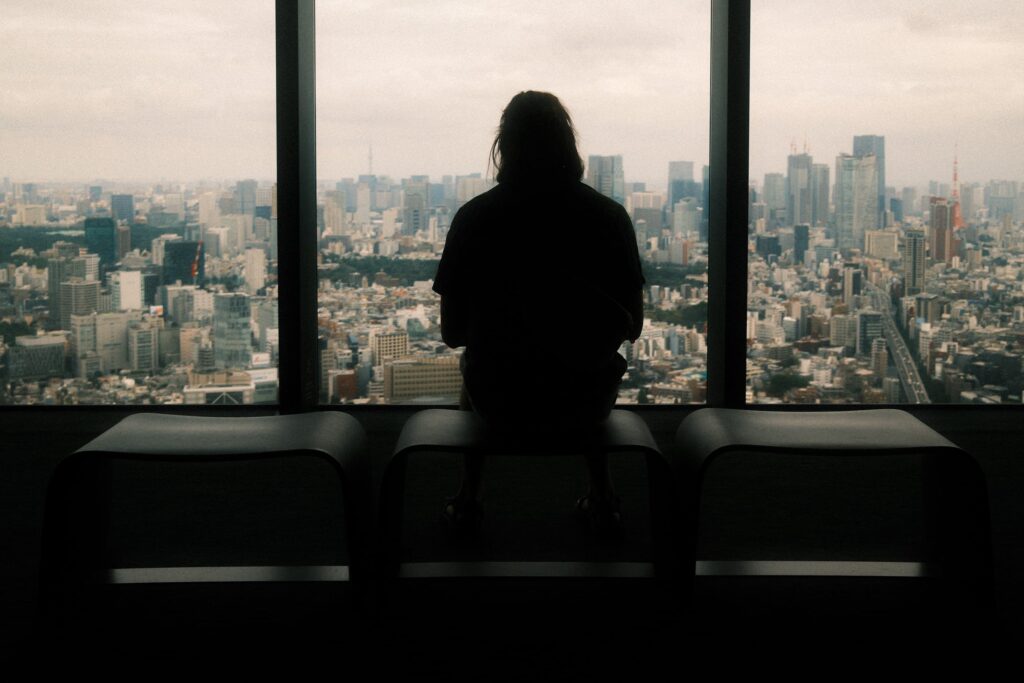
The sheer scale of Tokyo can be overwhelming, but what struck me the most was how incredibly safe it felt for a city of its size. I wandered through countless alleys at night without a second thought, never once feeling uneasy. In all my time there, I never saw a single disturbance that required police intervention.
Tokyo is a city that never stops surprising you. No matter where you go, there’s always something fascinating around every corner—whether it’s a tiny hidden bar, a vibrant arcade, or a serene shrine tucked between skyscrapers. If you love to roam and explore, Tokyo is a gold mine of unexpected discoveries waiting to be found.
Shinjuku

After reading countless recommendations, we decided to stay in Shinjuku—and it did not disappoint. This ward is packed with neon lights, towering billboards, and an endless selection of bars, restaurants, clubs, and karaoke rooms. If you love nightlife, Shinjuku is the place to be.
One thing I noticed almost immediately (and repeatedly throughout my stay) was the sheer number of foreigners trying to lure people into shady establishments—particularly those tied to prostitution. They’re seemingly everywhere in Shinjuku, specifically at night.
That aside, the area has plenty to offer beyond its nightlife. If you’re a Square Enix fan, be sure to check out Artnia, their official gift shop. It’s a cool spot for merch, but skip the drinks—they’re not worth it.
Shibuya
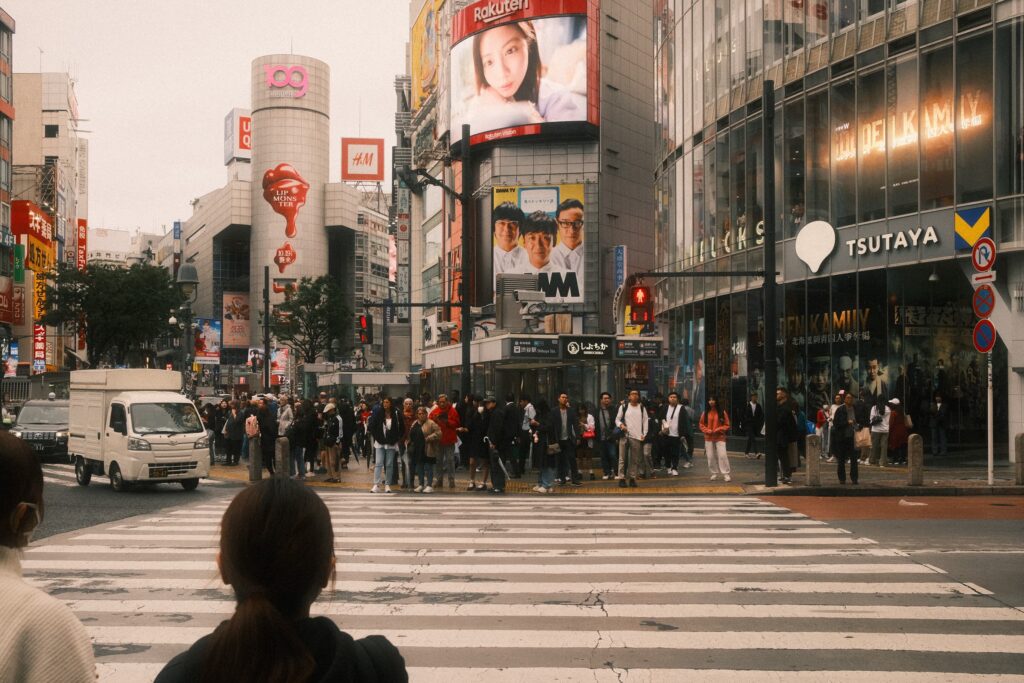
Shibuya felt just as crowded as Shinjuku but had a much stronger shopping scene. Beyond the endless department stores, one of my favorite stops was Tower Records. While it’s not exclusive to Japan, stepping inside felt like a time warp back to the ’90s. If you’re a video game fan, you’ll find vinyl records and CDs from franchises like Final Fantasy that you won’t see anywhere else.
Another must-visit spot is Nintendo Tokyo, a flagship store filled with exclusive merch and collectibles. And, of course, there’s the iconic Shibuya Scramble Crossing—just as chaotic and mesmerizing as you’d expect. Hundreds, if not thousands, of people crossing in every direction, many of them filming the experience. It’s an unforgettable snapshot of Tokyo’s energy in motion.
Jazz Spot Intro
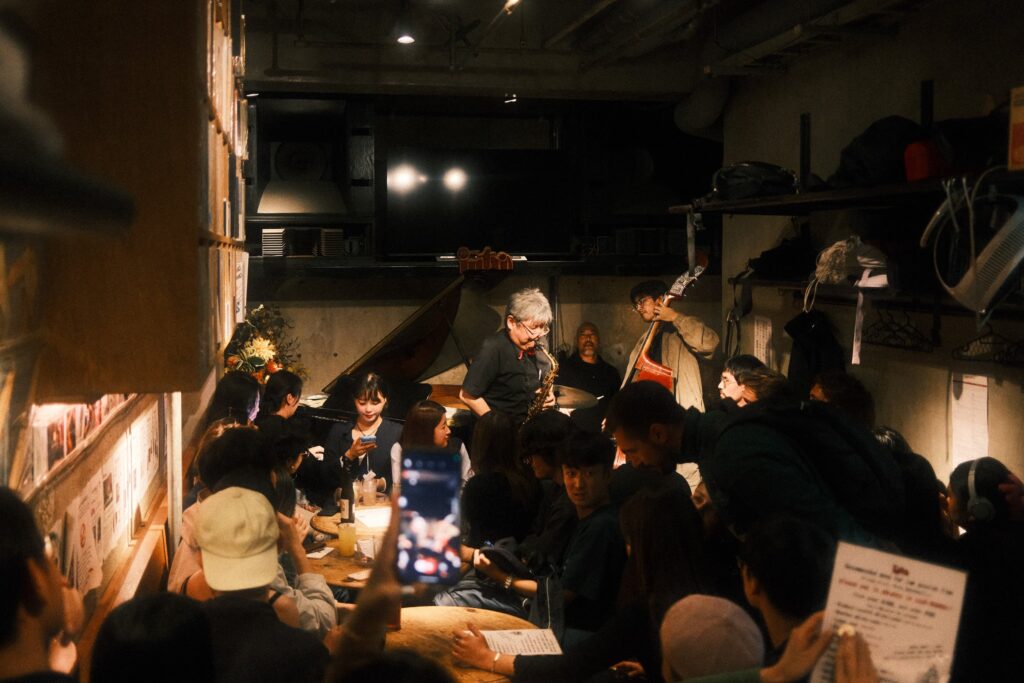
As a big jazz fan, I made it a point to check out some jazz bars in Tokyo. Of the ones I visited, Jazz Spot Intro in Shinjuku stood out as my favorite.
This place is tiny—claustrophobic, even. When we walked in, there wasn’t a single seat available. But despite the cramped space, the bartenders were incredibly welcoming and accommodating, immediately inviting us in and asking what we’d like to drink. One of them even turned out to be the saxophone player for the night.
After standing along the wall for about 20 minutes, a couple of bar seats finally opened up. We ended up staying for hours, chatting with locals and fellow travelers while soaking in the incredible live music. If you’re a jazz lover, Jazz Spot Intro is a must-visit in Tokyo.
No Room for Squares
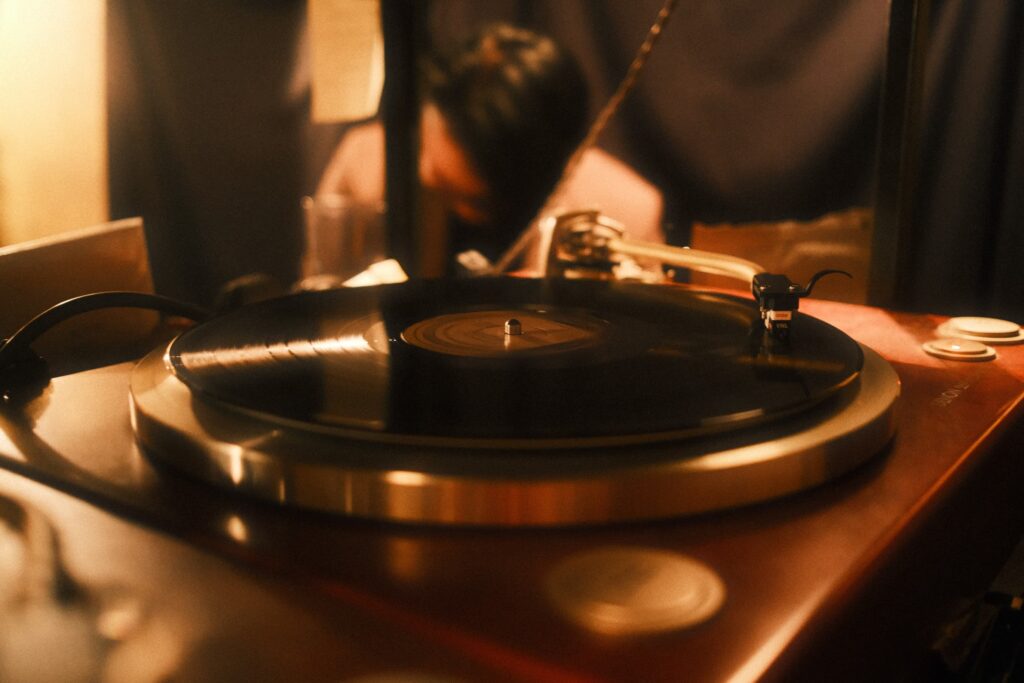
No Room for Squares is another unique jazz bar in Tokyo. While it didn’t feature live music during my visit, the atmosphere was still fantastic, with a great selection of jazz vinyls playing throughout the night. One standout album was Sonny Rollins’ Saxophone Colossus—a perfect fit for the vibe.
The place is a bit tricky to find, which is part of its speakeasy charm. The entrance is hidden behind what looks like an old Coca-Cola vending machine, adding to the mystery.
On the way there, I couldn’t help but notice something I’d read about online: the tendency of some locals to drink heavily on work nights. Sure enough, I came across a local puking in an alley right outside the bar. It was a reminder of Tokyo’s work hard, play hard culture that you might witness in certain neighborhoods. Despite that, No Room for Squares is still a great spot for anyone who enjoys a laid-back, vintage jazz experience.
Cat Cafe Mocha Lounge
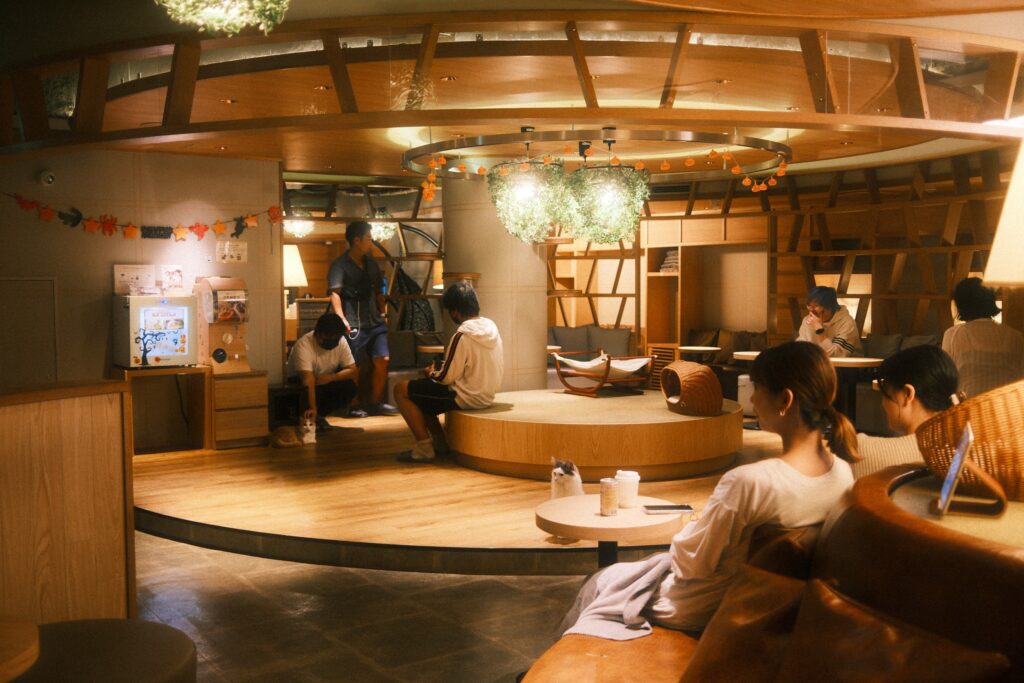
As a huge cat fan, I knew I had to visit a cat cafe while in Japan. With how popular they are there, the only challenge was choosing one. I ended up at Cat Cafe Mocha Lounge in Shinjuku, tucked away on the sixth floor of a high-rise building (finding places in Japan can sometimes be tricky like that).
Upon entering, you sign in and swap your shoes for slippers before wandering through the space. They provide lockers for your belongings, and if you fancy a drink, there’s even a vending machine stocked with Coke and hot coffee to enjoy while hanging out with the cats.
The cafe has a cozy, laid-back atmosphere with plenty of spots to relax—beds, couches, a reading nook, and various lounging areas. One particularly mischievous cat kept pulling blankets (or towels, can’t quite remember) off a shelf with his claws and tossing them onto the floor. The whole room got a good laugh out of it. If you love cats, this place is well worth a visit.
Shibuya Sky
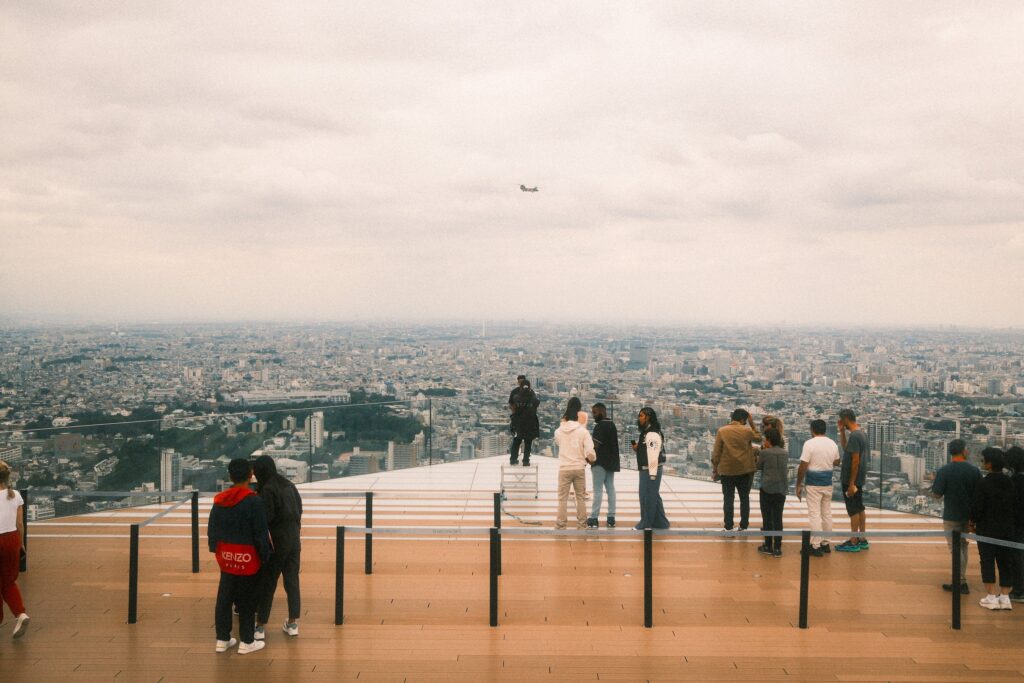
Shibuya Sky is a high-rise that offers an incredible panoramic view of Tokyo from its observation deck at the very top. If you plan to go, make sure to reserve your spot in advance, as the line can get quite long, and only a limited number of visitors are allowed each day.
On a clear day, you might even catch a glimpse of Mount Fuji far off in the distance. Below the observation deck, there’s a charming gift shop and cafe where you can take a break and recharge before continuing your adventure through Tokyo. Whether you’re looking to relax or snap some unforgettable photos, Shibuya Sky is a must-see.
Tokyo Skytree
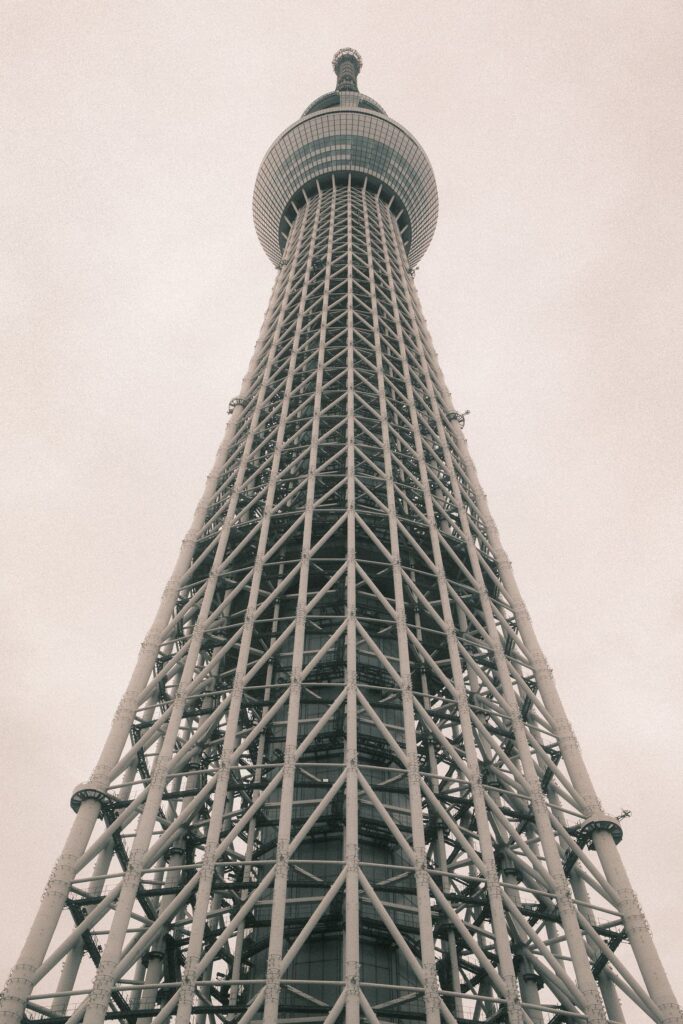
Much like Shibuya Sky, Tokyo Skytree offers breathtaking views of the city from high above. It reminded me of iconic towers like the CN Tower in Toronto or the Space Needle in Seattle. We didn’t make any reservations, but were able to get to the top fairly quickly, which was a pleasant surprise.
While the experience is definitely cool, it’s similar to Shibuya Sky in many ways—great views, modern amenities, and plenty of photo ops. If you’re a Studio Ghibli fan, there’s a small shop nearby that’s worth checking out. Whether you’re there for the views or the shopping, Tokyo Skytree is definitely worth a visit.
Nonbei Yokocho
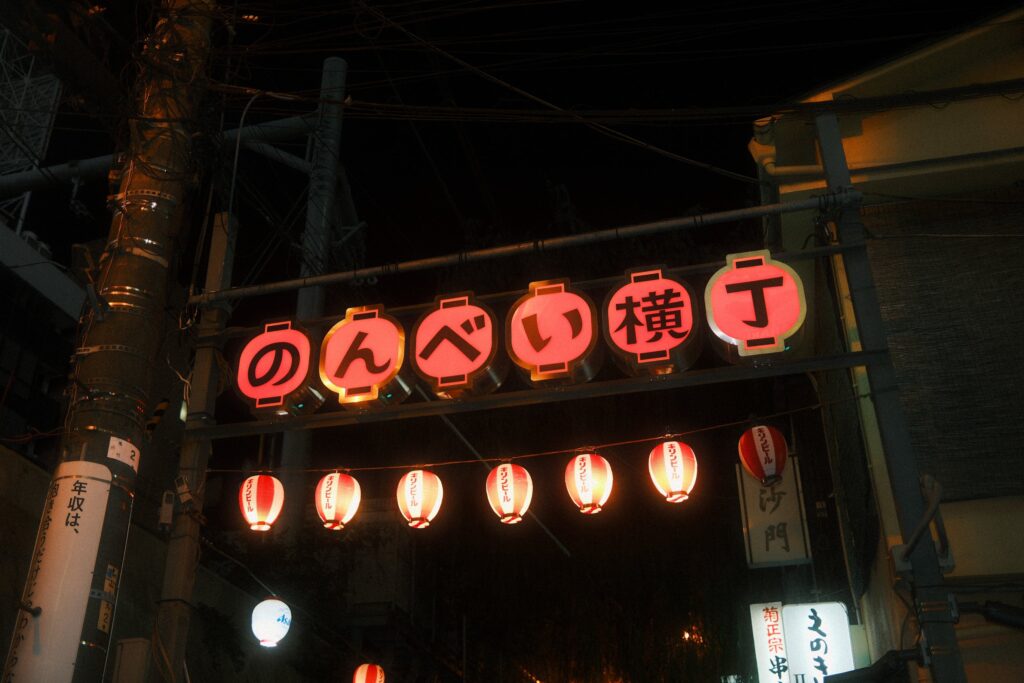
One night, while exploring the city, we stumbled upon Nonbei Yokocho (also known as Drunkard’s Alley). This hidden gem is lined with row after row of tiny bars, each one so small that it only fits a handful of people. The intimacy of the space creates a perfect atmosphere for interacting with locals and experiencing something truly unique.
If you’re a fan of Japanese whiskey, this is the place to be. The selection is impressive, and we became big fans of the 17-year-old Hibiki during our visit. Whether you’re sipping on whiskey though or simply enjoying the lively vibe, Nonbei Yokocho is a must-see for anyone looking to dive into Tokyo’s drinking culture.
It’s also worth mentioning Omoide Yokocho, another charming alleyway in Shinjuku with a vibe similar to Nonbei Yokocho.
teamLab Planets
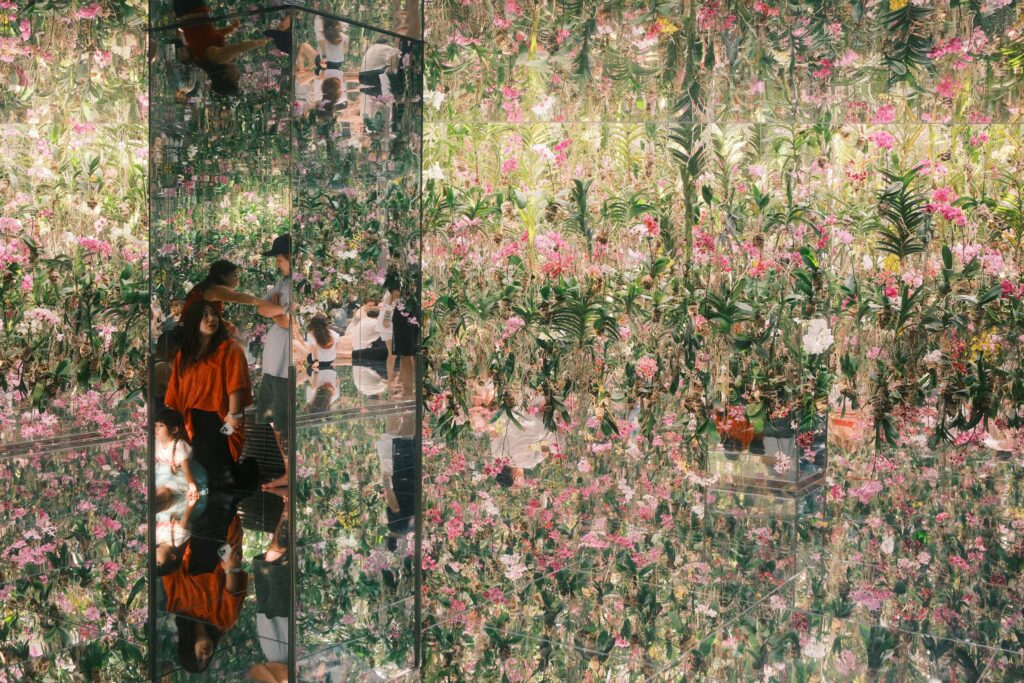
teamLab Planets in Tokyo is a fascinating art museum that uses digital technology in truly creative ways. The exhibits are designed for visitors to explore barefoot, allowing you to fully immerse yourself in the experience alongside others. The result is a space that feels both soothing and captivating.
One of the standout exhibits features strings of LED lights accompanied by music straight out of Interstellar, creating a surreal, otherworldly atmosphere. Another highlight is a pond where you walk through water while digital fish swim around you. It’s a unique blend of technology, art, and nature that feels like stepping into another world.
Some of my best photos and video clips came from this museum—it’s an absolute must-visit for anyone looking for an unforgettable sensory experience.
Imperial Palace
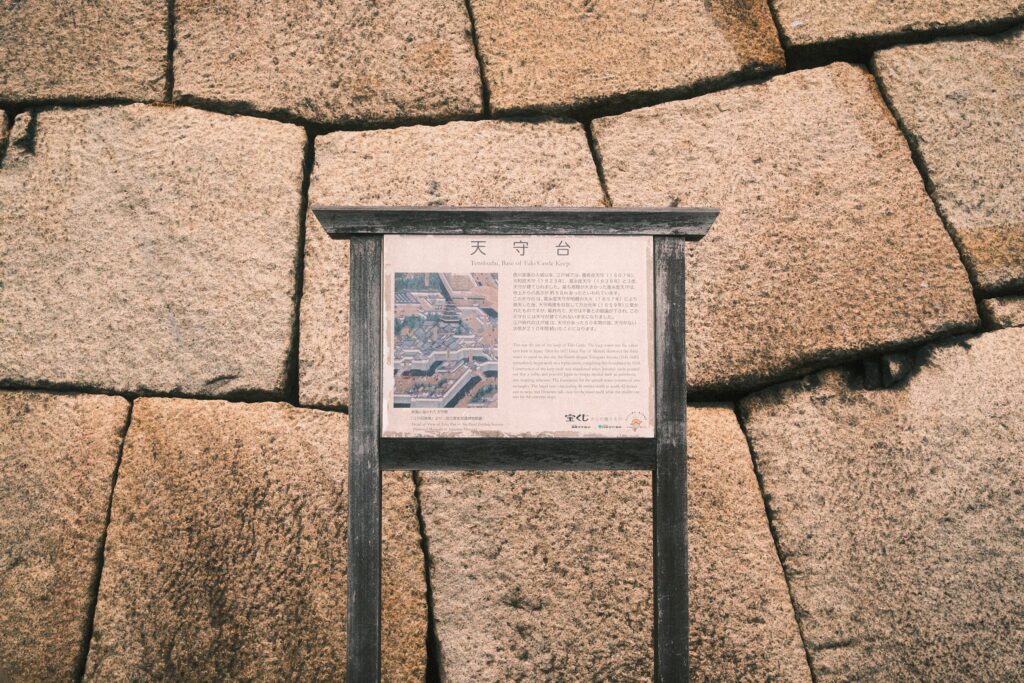
The Imperial Palace is an interesting destination if you’re keen on learning about its historical significance. However, don’t expect to see many structures, as most of them are long gone. Instead, you’ll be walking through the expansive grounds, reading informative signs that describe what once was.
When we visited, it rained all day, so water-resistant shoes and a jacket were definitely essential to make the experience more comfortable. While the palace might not offer much in terms of physical sights, it’s still a peaceful and reflective place to appreciate Tokyo’s rich history.
Tokyo Dome
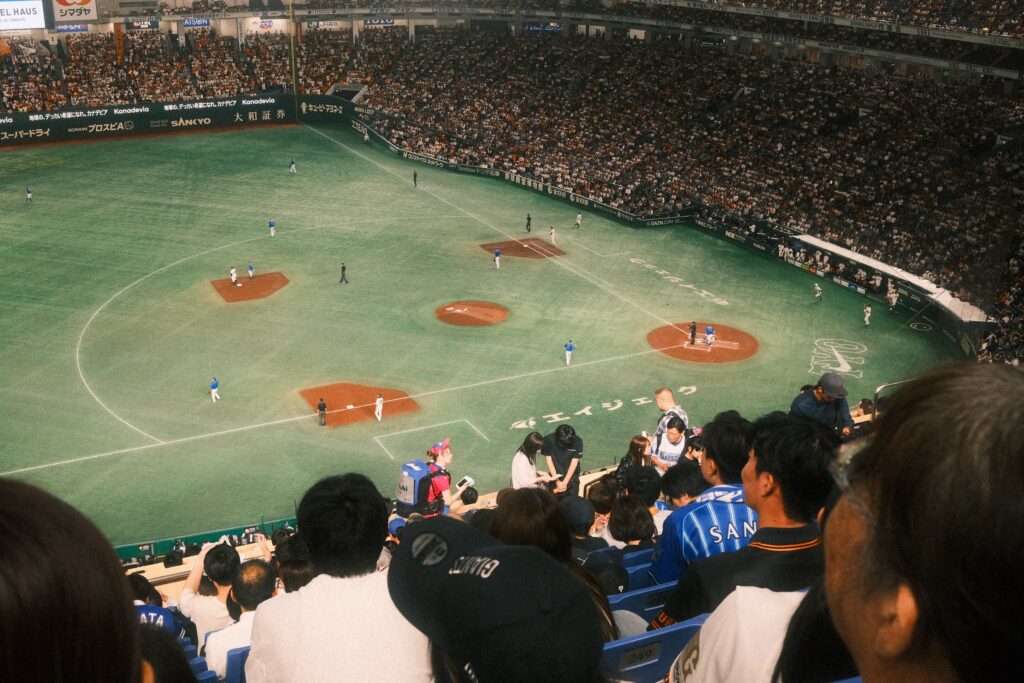
One of the highlights of my trip was catching a baseball game at the Tokyo Dome. My cousin managed to snag Yomiuri Giants tickets online (I think from StubHub) and had them mailed to our hotel.
It was fascinating to observe the difference between Japanese and American baseball fans. For starters, the atmosphere was much more calm and respectful. Fans cheered enthusiastically whenever their team made a play or scored, but there was no aggressive behavior or angry outbursts. You wouldn’t hear anyone berating the opposing team or their supporters.
As for the concessions, they were surprisingly similar to what you’d find at a game in the U.S. Hot dogs, pretzels, beer—all the classic stadium snacks were available. It felt like a familiar part of the American baseball experience, just with a Japanese twist.
Little Darling Coffee Roasters
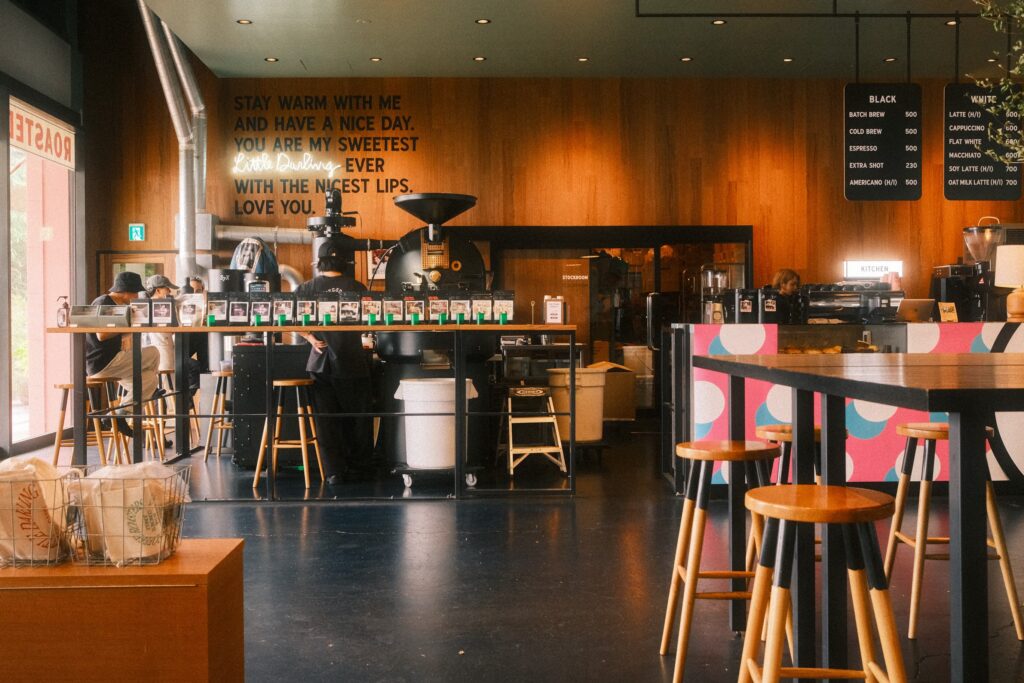
Toward the end of our trip, I was craving a good cup of coffee, so we decided to check out Little Darling Coffee Roasters, a highly rated spot. It turned out to be a charming little cafe with delicious coffee and freshly baked scones. While there’s other coffee spots worth exploring, if you find yourself in the neighborhood, I’d definitely recommend stopping by. It’s a cozy place to unwind and enjoy a quiet moment amidst the hustle and bustle of the city.
Kyoto
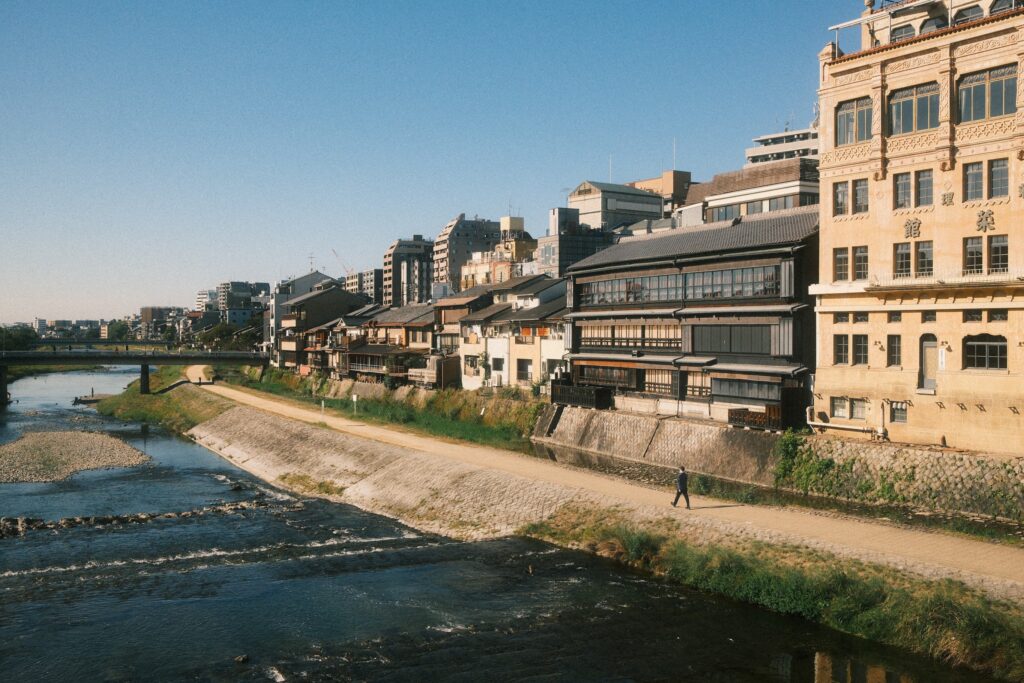
Kyoto offers a peaceful contrast to the fast-paced energy of Tokyo. Walking through the city feels like stepping into a more quaint and intimate world. Kyoto is the perfect place to move at your own pace and truly appreciate the beauty Japan has to offer.
Whether you’re strolling down the wide, busy sidewalks of Shijo-dori, hiking alongside the serene Kamo River, exploring the vibrant restaurants and bars of Kiyamachi street, or wandering through the countless temples scattered throughout the city, Kyoto offers a safe, quiet, and unforgettable experience. It’s a city that invites you to slow down and soak in its unique charm.
Kyoto Beer Lab
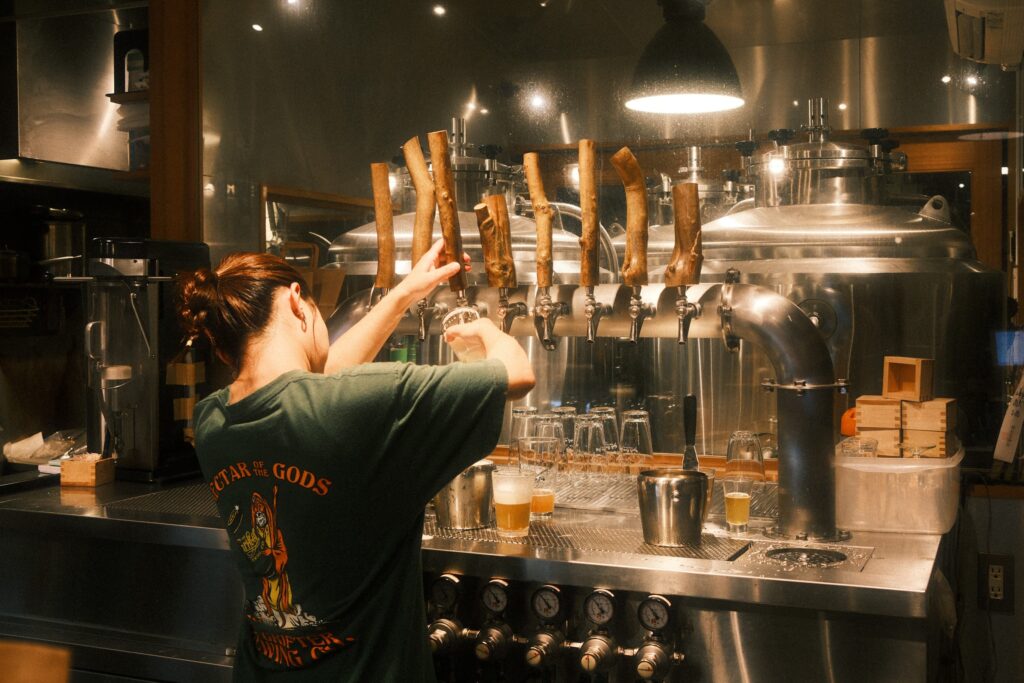
The night we arrived in Kyoto, we were in the mood to check out a brewery. While we’d tried several in Tokyo, none of them really stood out. So, after checking into our hotel and enjoying a delicious ramen dinner, we set off for Kyoto Beer Lab.
The walk there was so peaceful and serene—it felt like we were strolling down a quiet residential street, with a small canal running through the middle. The path was dimly lit by streetlights, and all we could hear were the sounds of insects. It was the perfect start to our evening.
When we finally arrived, the brewery was fairly crowded, so we had to wait a little while to grab a seat outside. If you’re a fan of craft beer, I highly recommend stopping by. We even had an interesting conversation with a gentleman who had married a Japanese woman and moved to Japan from the U.S. It was one of those authentic, unexpected experiences that made the night memorable.
Higashiyama

The Higashiyama District is an absolute must-see when in Kyoto. This historic area is a window into ancient Japan, with its traditional architecture and winding streets. There’s so much to explore here—from quaint restaurants and shops to local breweries. It’s popular, yes, but the crowds never felt overwhelming or frustrating.
During our visit, we did some shopping and stumbled upon Kyoto-style fried chicken—a delicious local specialty. We also found a small sake and beer stand called 336 that surprisingly offered a Kolsch, a rare find in Japan.
Higashiyama is a lovely spot to spend the day—whether you’re looking to shop, grab a bite, or just take a break from the temples and other tourist spots. The mix of culture, food, and history makes it a perfect place to unwind and enjoy the charm of Kyoto.
Kiyomizu-dera Temple
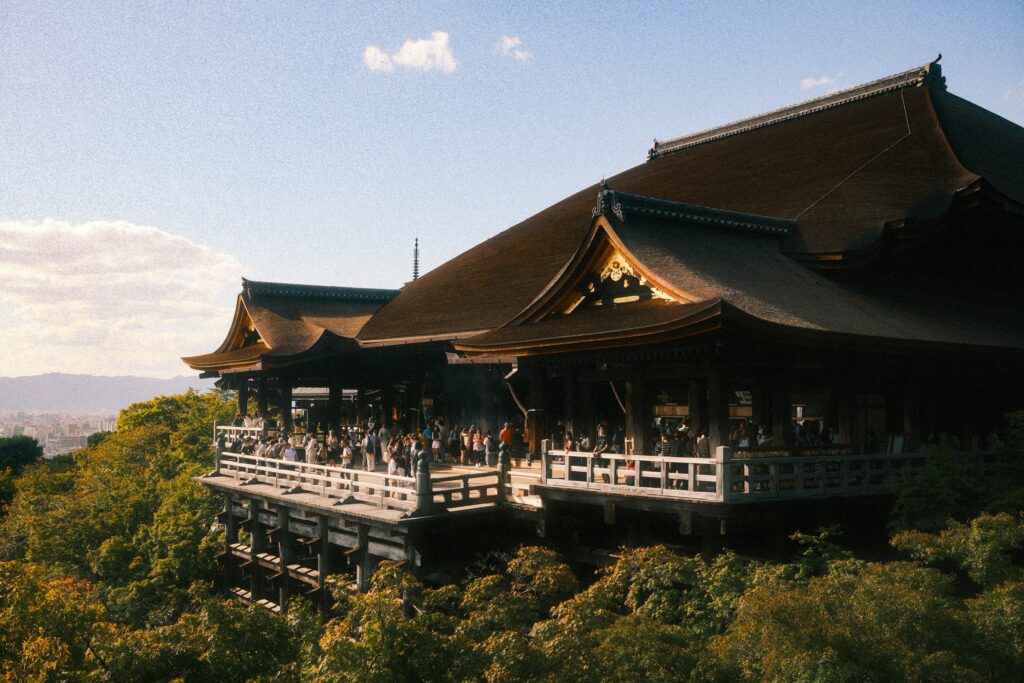
Kiyomizu-dera, also known as the Pure Water Temple, is one of Japan’s most iconic landmarks. Nestled in the wooded hills of eastern Kyoto, it’s built around the serene Otowa Waterfall, adding to its tranquil atmosphere. The temple grounds also feature other beautiful structures, like Okuno-in Hall and Koyasu Pagoda.
The highlight is undoubtedly the large wooden veranda that extends over the hillside, offering breathtaking views of Kyoto. The entire site is a fascinating blend of nature, architecture, and history, making the entrance fee more than worth it.
I visited during the autumn season, when the colors of the leaves were starting to change, but if you plan a visit in spring, you’ll get the added beauty of the cherry blossoms surrounding the main temple.
For photography enthusiasts, I recommend visiting early in the morning. The light is softer, and you’ll avoid the harsh midday sun, which can make photos a bit tricky later in the day.
Sanjusangen-do Temple
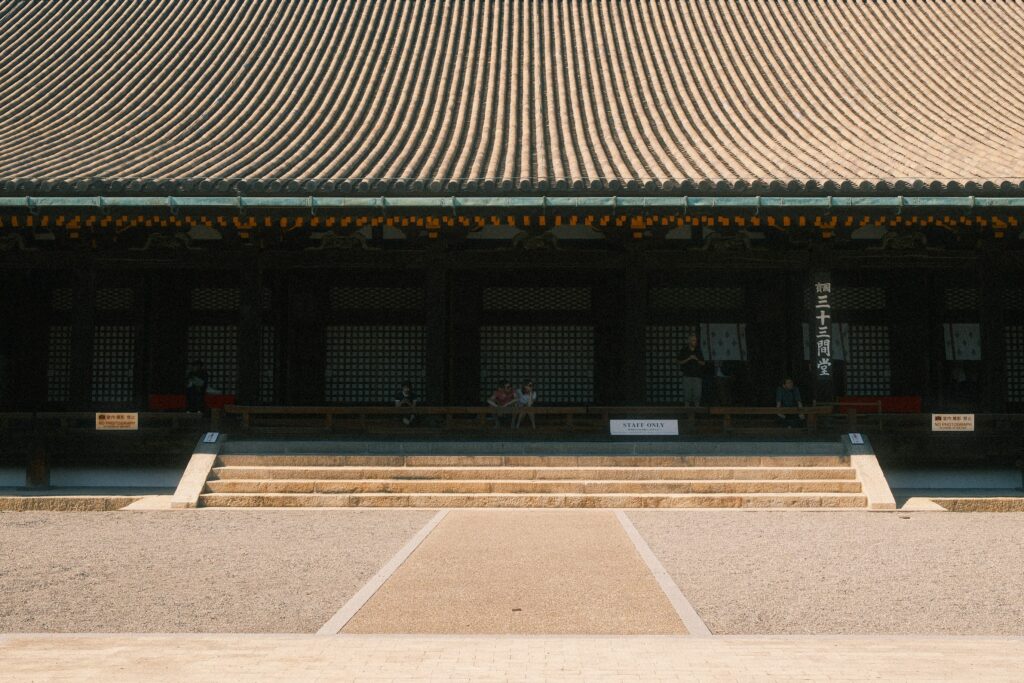
Sanjusangen-do is an awe-inspiring temple, famous for its thousands of Kannon statues, representing the goddess of mercy. It’s believed to be the longest wooden structure in Japan, which only adds to its impressive scale. Inside, you’re not allowed to take photos, which was a bit of a disappointment, but the sheer number of statues is something to behold in person. Beyond the main hall, there are other fascinating bits of history and artifacts to explore, making the temple even more intriguing.
While I wouldn’t necessarily prioritize Sanjusangen-do over other major Kyoto attractions like Kiyomizu-dera, Fushimi Inari, Arashiyama, or Kinkaku-ji, it’s definitely worth a visit if you find yourself with extra time. The peaceful atmosphere and unique features make it a worthwhile stop for history buffs and those seeking a quieter experience.
Fushimi Inari Taisha
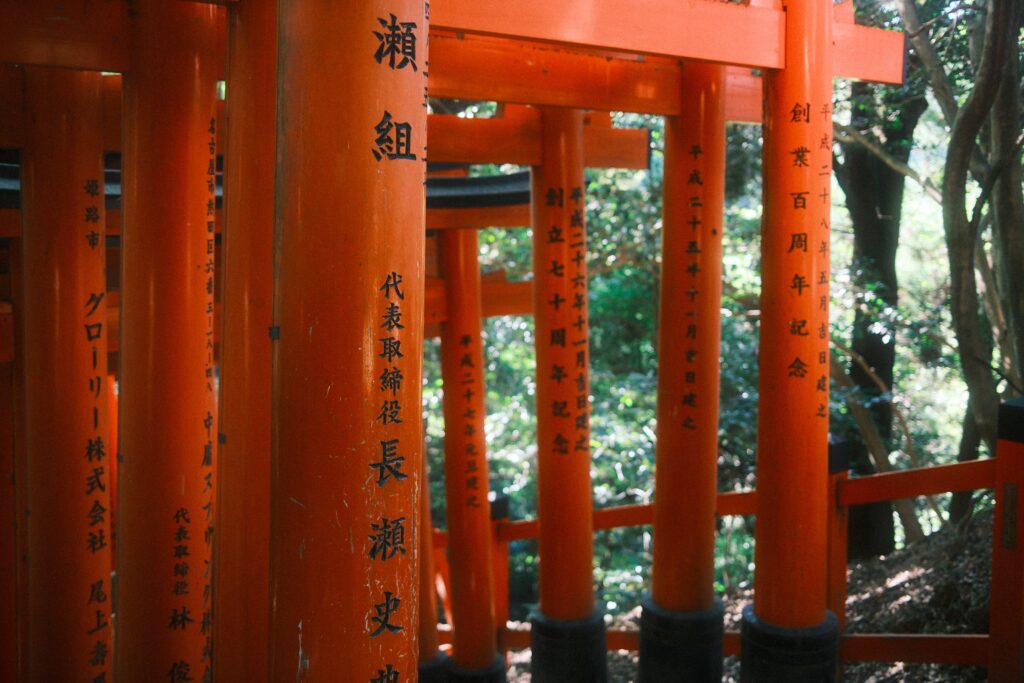
Fushimi Inari Taisha is one of the most famous tourist destinations in Kyoto, and for good reason. The area around the entrance can get a bit crowded, but as you start making your way through the shrine, it becomes much less hectic and more peaceful.
What makes Fushimi Inari truly iconic is its extensive network of vermilion torii gates that wind their way up Mount Inari through the forest. The path is also dotted with fox statues, which are believed to be messengers of Inari, the Shinto deity associated with rice.
Round trip it’s a bit of a hike, but there are plenty of spots to grab a drink or take a break along the way. Given the size of the shrine and the scenic beauty, I’d recommend setting aside plenty of time to walk through and fully appreciate everything this unique site has to offer.
Right outside Fushimi Inari, there’s a small town with plenty of street food and beer—an ideal spot to unwind after a long expedition around Mount Inari.
Arashiyama Bamboo Grove
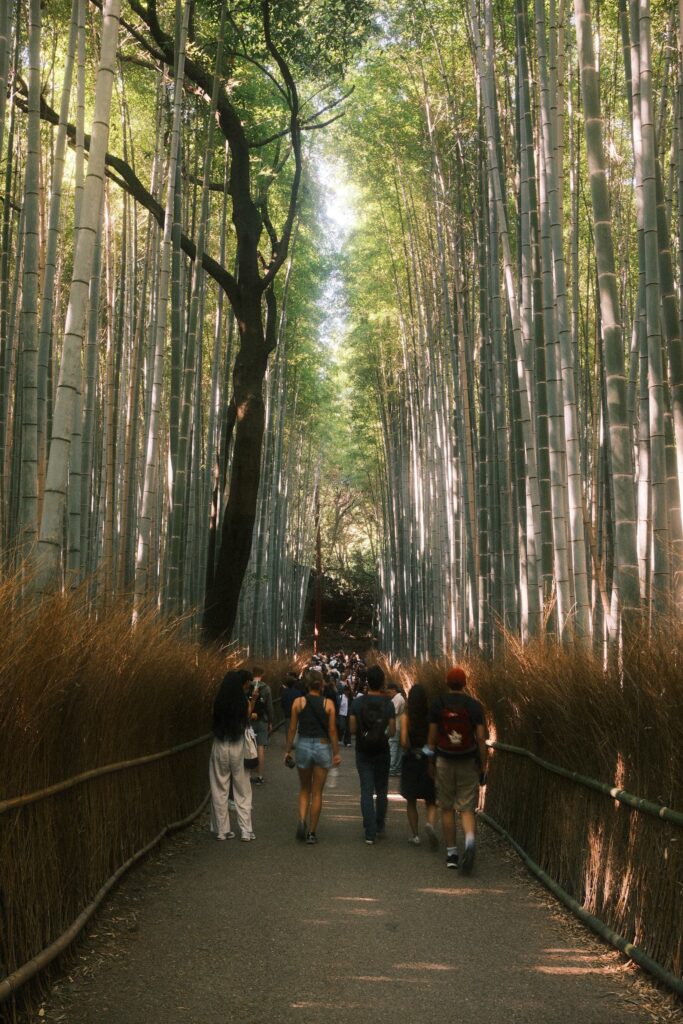
The Arashiyama Bamboo Grove is a bit off the beaten path from downtown Kyoto. To get there, you’ll need to take the subway for a portion of the journey, then transfer to a smaller, above-ground train for the rest of the ride. I think there were about 15 to 20 stops before reaching the final destination, and to be honest, we didn’t even get a seat the whole way. Before leaving the train station, be sure to grab some delicious strawberry ice cream.
The biggest bottleneck of people we experienced in Japan was at the entrance to the Arashiyama Bamboo Grove. There are so many visitors all trying to get a glimpse of this extraordinary place. It can be a bit frustrating, with people snapping pictures, tour groups moving at different paces, and just the sheer number of people all wanting to experience the same thing. However, once you get past the initial crowd and enter the grove, it’s absolutely worth it. The sunlight streaming through the swaying bamboo creates such a magical scene.
We also decided to spend a little extra yen to visit Okochi Sanso Villa and Gardens, a beautiful, tucked-away spot within the larger bamboo grove. This was once the home of the famed actor Okochi Denjiro. As you explore the gardens, you’re rewarded with a stunning view of Kyoto and a lovely tea house at the end of the path. It’s a serene and beautiful experience that adds a nice contrast to the bustling bamboo grove.
Kinkaku-ji Temple
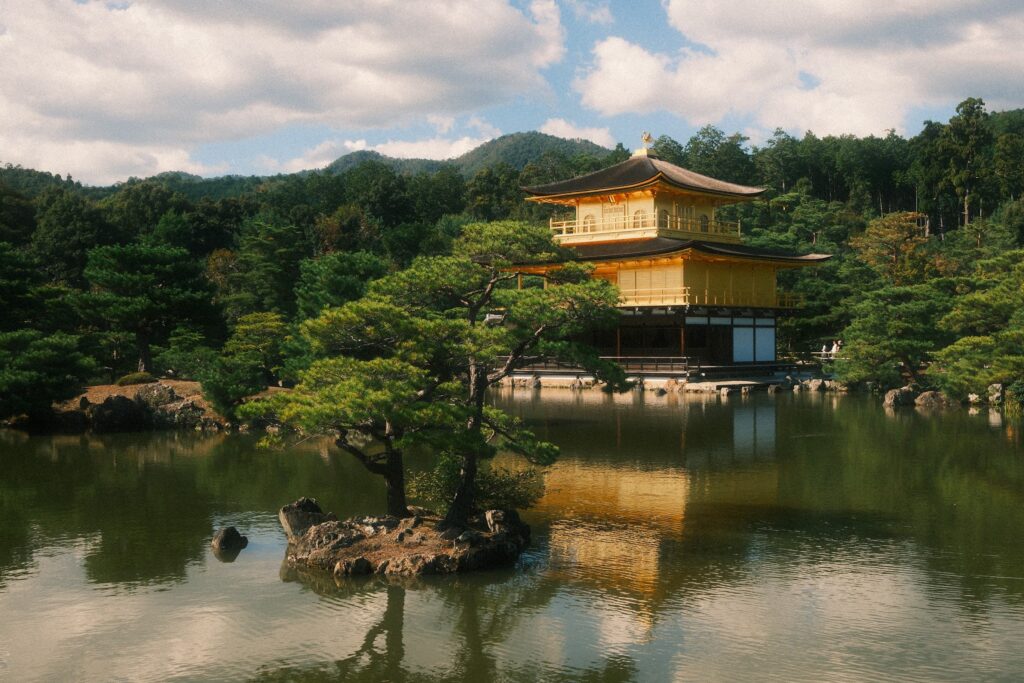
We heard from some Aussie tourists that the “Golden Temple”—Kinkaku-ji—was one of the best temples in Kyoto. Getting there, though, was certainly more challenging than any other site we visited. We took the train as far as it would take us, then hiked the rest of the way. I don’t remember exactly how far the hike was, but it felt like miles. Of course, if you’re not in the mood to walk that far, you can always take the bus (which we did on the way back).
Kinkaku-ji is famous for its gold leaf-covered exterior, which was supposedly intended to cleanse negative thoughts and emotions associated with death. The temple’s beauty is even more striking when the sunlight reflects off the golden surface, creating a stunning image on the pond below.
Outside of the Golden Pavilion, there isn’t much else to see, but Kinkaku-ji itself is an astonishing sight—easily one of the most beautiful temples in Kyoto, and definitely worth the trek to visit.
Osaka
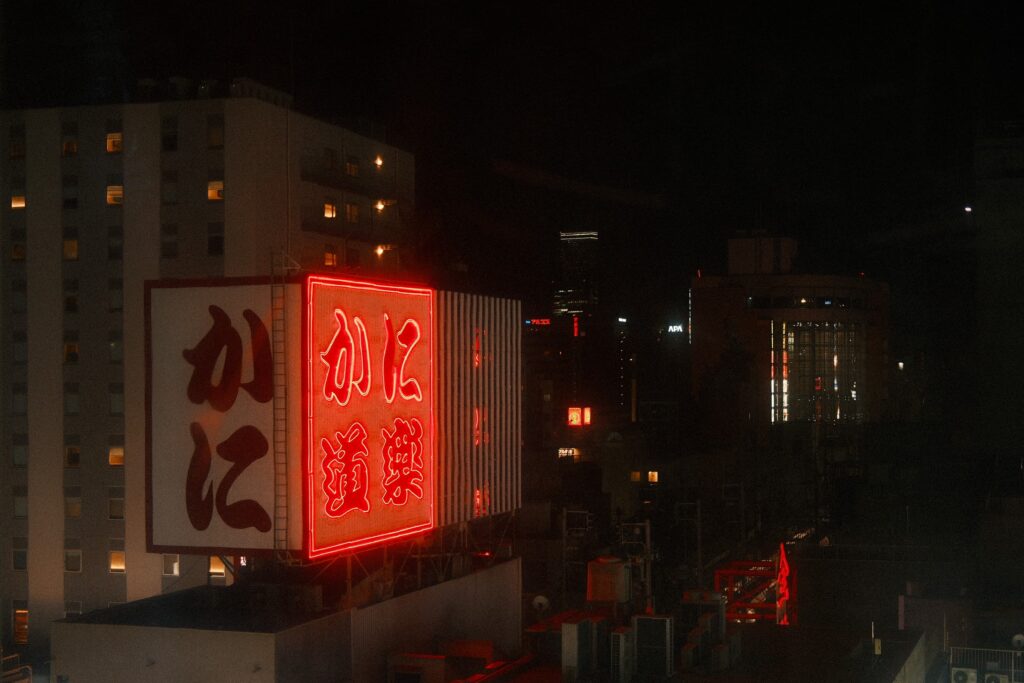
Osaka has a vibe similar to Tokyo—a sprawling city brimming with endless things to see and do. Stepping out of the terminal and heading toward our hotel, we immediately found ourselves in Shinsaibashi-suji, an area that felt like a massive open-air shopping district. It was absolutely packed—shoulder to shoulder—even more so than anything we had experienced in Tokyo. The energy was electric, and you could feel the city’s pulse everywhere you went.
While our time in Osaka was mainly centered around Dotonbori, we also made sure to branch out and visit some other iconic spots, like Osaka Castle and Universal Studios Japan. Osaka’s blend of vibrant streets, historic landmarks, and entertainment options made for a dynamic experience that perfectly complements the buzz of Tokyo.
Dotonbori
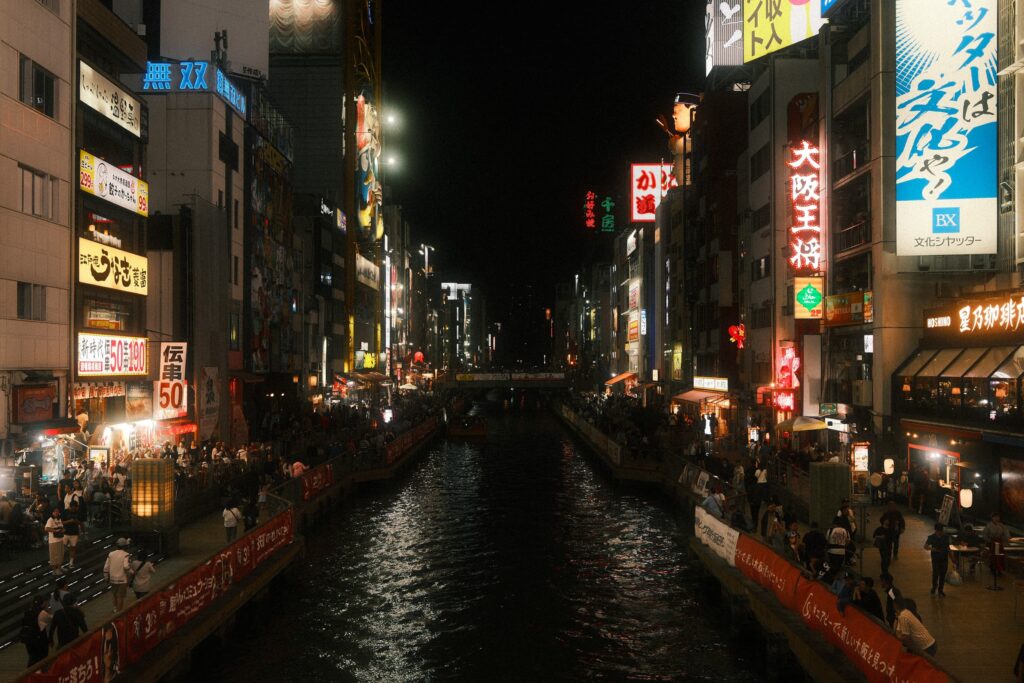
We spent most of our time wandering the iconic Dotonbori district, a vibrant, bustling entertainment and shopping hub in Osaka. Known for its dazzling neon signs, street food, and lively atmosphere. The area around the Dotonbori Canal is like Japan’s nightlife mecca.
One of the coolest spots we found was a hidden speakeasy called Bible Club. You might have to wait a bit for a seat, but their cocktails are absolutely worth it. For a unique shopping experience, head over to Don Quijote, the famous discount chain, which has six floors filled with all kinds of random goods. If you’re looking to grab some Japanese snacks to bring home, this is the place to stock up.
If you’re a fan of Kobe Beef, make sure to check out Kobegyu Wanomiya. This amazing Kobe Beef steakhouse is a bit pricey, and reservations are a must, but it’s definitely worth the splurge for a top-notch dinner. Dotonbori has everything from unique shopping experiences to unforgettable meals, making it the perfect spot to immerse yourself in the heart of Osaka.
Osaka Castle
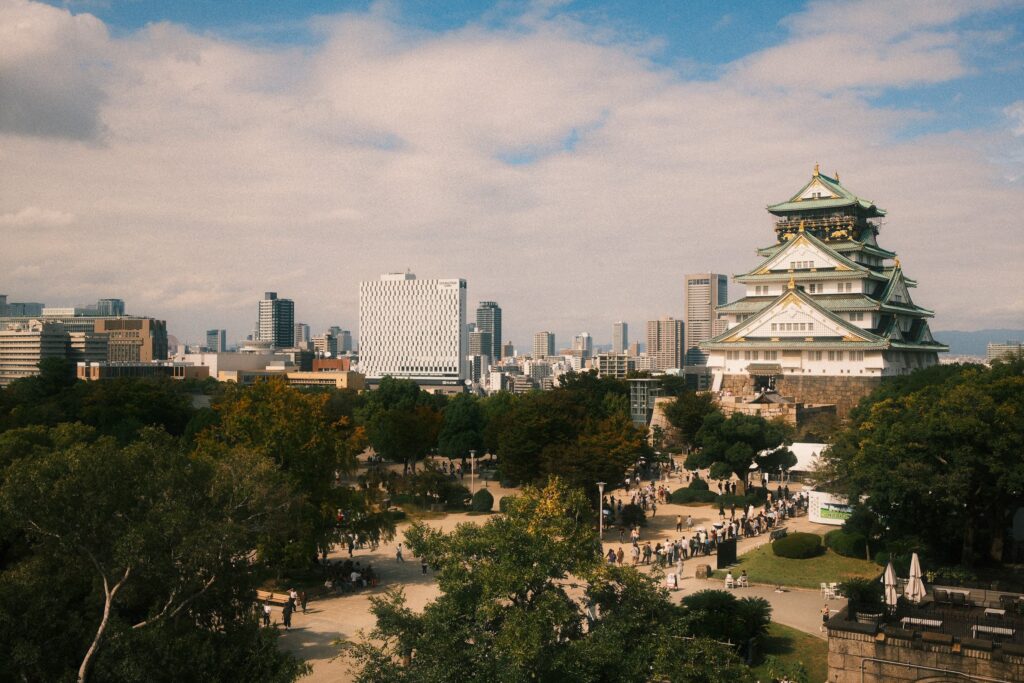
Osaka Castle is a true symbol of Japan’s rich history, famous for its striking architecture and beautifully preserved grounds. Surrounded by a scenic park, it offers not only a glimpse into the past but also stunning views of the city. The main keep is a reproduction of the original, with the interior now serving as a modern-day museum. As you make your way through the castle, you’ll uncover a wealth of history, including fascinating details about the castle’s construction and the tumultuous battles that surrounded it.
One of the more shocking revelations was learning how an opposing faction managed to break through the castle’s defenses and take control. With the castle’s thick walls and moat, it seemed nearly impossible, yet the strategy they used is both surprising and intriguing.
Just outside the castle, you’ll find Osaka Castle Central Square, home to several gift shops and a rooftop bar offering great views of the area. It’s a perfect spot to unwind after exploring the castle.
Overall, Osaka Castle is an iconic destination that should definitely be on your bucket list if you’re visiting Osaka. It combines history, stunning views, and a peaceful escape from the hustle and bustle of the city.
Super Nintendo World
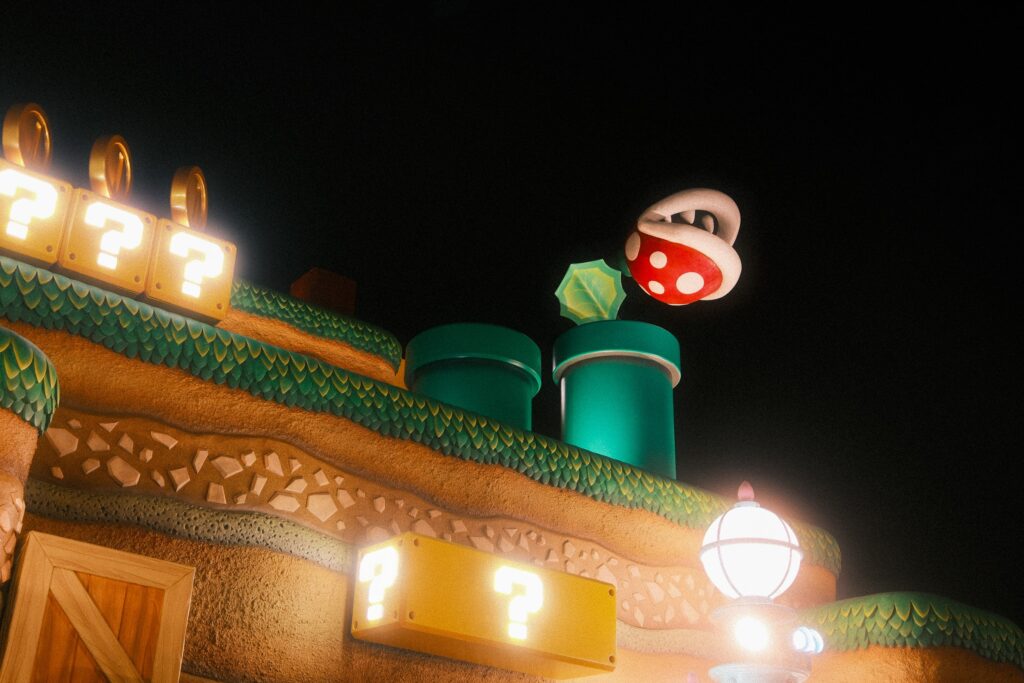
We decided to dedicate one day to visiting Universal Studios Japan, specifically to check out Super Nintendo World. The ticket system can be a bit confusing, so it’s important to do your research ahead of time. We had some trouble figuring it out on the day of, even having to ask the employees at the front gate for clarification. From what I remember, you’re free to explore the main park, but access to Super Nintendo World is restricted to a designated time frame. I think the time slots are somewhat random, but you might be able to select a time for a higher price.
Personally, I’m not a huge fan of theme parks—it’s a lot of standing around for just a few minutes on a roller coaster. That said, the Jurassic Park ride was actually pretty fun. Super Nintendo World, on the other hand, was a bit of a mixed bag. Seeing the world of Super Mario brought to life was exciting, but the long lines and underwhelming rides left a lot to be desired.
With limited time, we decided to wait hours for what we assumed would be the park’s best attraction—Mario Kart: Koopa’s Challenge. Unfortunately, it wasn’t worth it. The ride felt like playing a clunky AR game while sitting in a bumper car. Honestly, you’d have more fun just playing Mario Kart on the Nintendo Switch. The park itself is mainly geared toward kids (as expected), so if you’re an adult without children, you might find the whole experience underwhelming.
If you’re short on time, I wouldn’t recommend spending an entire day at Universal Studios Japan, especially just for Super Nintendo World. Instead, if you’re a Nintendo fan, consider visiting the Nintendo Museum in Kyoto. It offers a much more immersive experience, providing a deeper dive into Nintendo’s history without the theme park crowds. Just keep in mind that the museum books up months in advance, so if you’re planning a trip, be sure to secure your tickets as early as possible.
Do Your Research
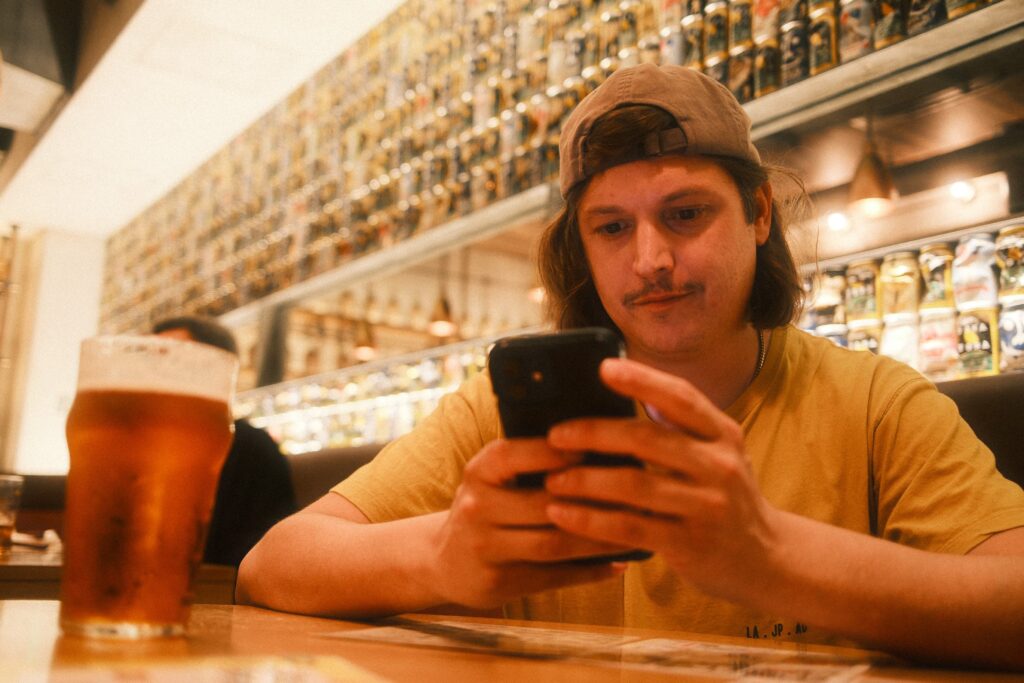
One thing that might be obvious, but definitely worth repeating: do your research before visiting Japan. While it’s easy to get excited about the trip, some aspects—like navigating the Shinkansen—can be a bit stressful if you don’t plan ahead. Here are some tips that helped me, and they might help you too.
When do you want to go?
Do you want to visit during cherry blossom season in spring or when the temperatures are comfortable in autumn? I learned from people on the r/JapanTravelTips subreddit that summer isn’t ideal due to the intense humidity. It’s important to consider the time of year for your trip, as it can make a big difference in your comfort and overall experience.
How much money have you budgeted for the trip?
I visited in October 2024, and the Japanese Yen was relatively weak at the time, making my trip more affordable. Your experience might differ, so it’s a good idea to check how far your native currency will go. My entire trip cost around $5,000 USD, which included airfare, lodging (staying in decent hotels), ATM withdrawals, food, drinks, shopping, entertainment, and transportation.
What would you like to see and do?
Start by identifying the cities you want to visit. I knew Tokyo and Kyoto were must-sees for me, and since Osaka was only a short trip from Kyoto, it made sense to include it as well. From there, I researched specific things to see and do in each city—like different attractions, jazz bars, breweries, coffee shops, and restaurants. Keep in mind that time flies, so you’ll need enough time to really explore each place. If you want to experience multiple cities, plan on at least two weeks.
Fill out the immigration form before you leave.
You can access the form by visiting the official website. When you get to customs, they’ll scan your QR code associated with your form to expedite the process, saving you time at the airport.
Add the Suica card to your Apple Wallet and download the SmartEX app.
The Suica card is used almost everywhere, from public transportation to convenience stores. You can easily add it to your phone’s digital wallet, then load funds as needed throughout your trip. For Shinkansen travel, use the SmartEX app to book tickets when traveling between cities. Book early, as tickets can sell out quickly. If you’re traveling from Tokyo to Kyoto (or vice versa), reserve seats D and E on the Shinkansen to catch a great view of Mount Fuji. Also, if you plan on storing large check-in luggage, make sure to reserve a special seat for it.
Carry-on vs check-in luggage.
This is something I debated a lot before my trip. After reading various opinions online, I ended up taking a backpack and a medium-sized check-in bag, but looking back, I would probably downsize to a carry-on. The reason? The hassle of carrying large luggage from city to city. Trains can get crowded, so finding space for big luggage can be a challenge. Plus, you’ll need to drag that heavy bag from the train station to your hotel. That said, you can always take advantage of the hotel’s luggage forwarding service for a small fee. Honestly, you don’t need a ton of stuff and you can always do laundry at the hotel. If you plan on bringing back souvenirs, a small backpack in addition to a carry-on should be enough. I’d recommend reconsidering large check-in bags—especially if you’re hopping between cities.
Observations
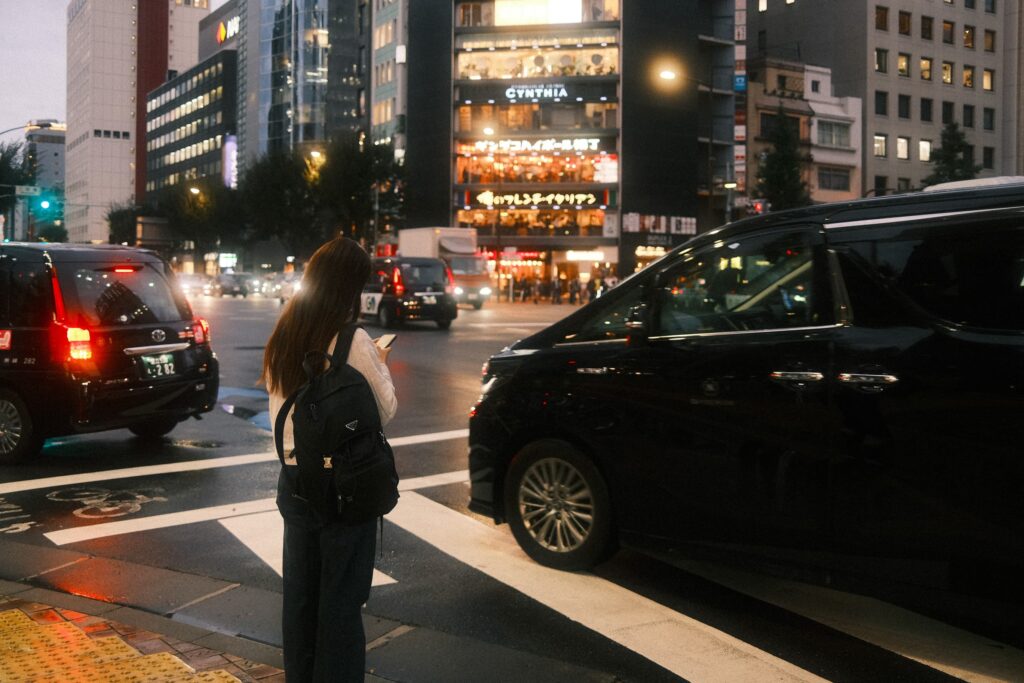
Below is a list of random observations I noted during my two weeks in Japan. I’ve previously spoken to some of them but here’s the full unedited list:
- People work with passion (everyone is happy to be doing whatever they’re doing).
- People are happy to use Google Translate. It’s also really helpful when scanning packaged goods.
- There’s so many foreigners in Japan. Ran into people from Scotland, Denmark, Australia, France, the UK, and Canada.
- Apple and Suica cards are used almost everywhere but cash is still necessary on occasion (e.g. shrine & temple shops).
- Sucia card will get you anywhere, just load up yen and scan it at every terminal.
- Yen is weak, USD will get you very far.
- Hotels provide razors, pajamas, slippers, umbrellas, etc.
- Put umbrellas inside plastic bags when entering stores.
- Rain jacket and water-resistant shoes are a must.
- Tokyo and Osaka are absolutely packed with people.
- Trains get crazy around rush hour. Exits at the stations can be confusing.
- Be mindful of your speaking voice (don’t be too loud).
- Japanese use cardinal numbers (e.g. order 2 shots instead of a double).
- Make reservations for fancy restaurants and the Shinkansen. There’s usually lines to get into popular places (not too much of an issue in Kyoto).
- Tokyo is safer than any city in the U.S.
- Several places will not split the bill in two.
- Nobody is carded for buying alcohol. Seems to run on an honor system. Console simply asks your age and if you plan on driving.
- Whiskey Highballs are very popular, especially in convenience stores.
- Girls typical wear skirts, tall socks, nice boots, and have long straight hair.
- Guys wear baggy clothing and sometimes use purses.
- People often wear muted colors (e.g. black, white, dark blue).
- Most people drive domestic cars, though some opt for high-end German vehicles.
- Every bathroom is clean and features a bidet. This includes the subway or any convenience store.
- Everyone in American is self-absorbed versus self-aware like in Japan.
- Geography is similar to Kentucky.
- Nobody uses bike locks.
Conclusion
Japan was truly a trip of a lifetime and a major item checked off my bucket list. It was by far the most exciting and thrilling vacation I’ve ever had, and I honestly can’t wait to return someday. Now that I know what to expect, I’ll be able to dive right in and explore some of the more remote regions—and hopefully unwind in an onsen.
If you’re on the fence about visiting Japan, just do it. It’s an experience like no other—unique, memorable, and one that will stay with you for the rest of your life. Whether it’s the culture, the food, the history, or the people, Japan has something for everyone. If you have any questions or concerns about your own trip, feel free to reach out—I’d be happy to help!
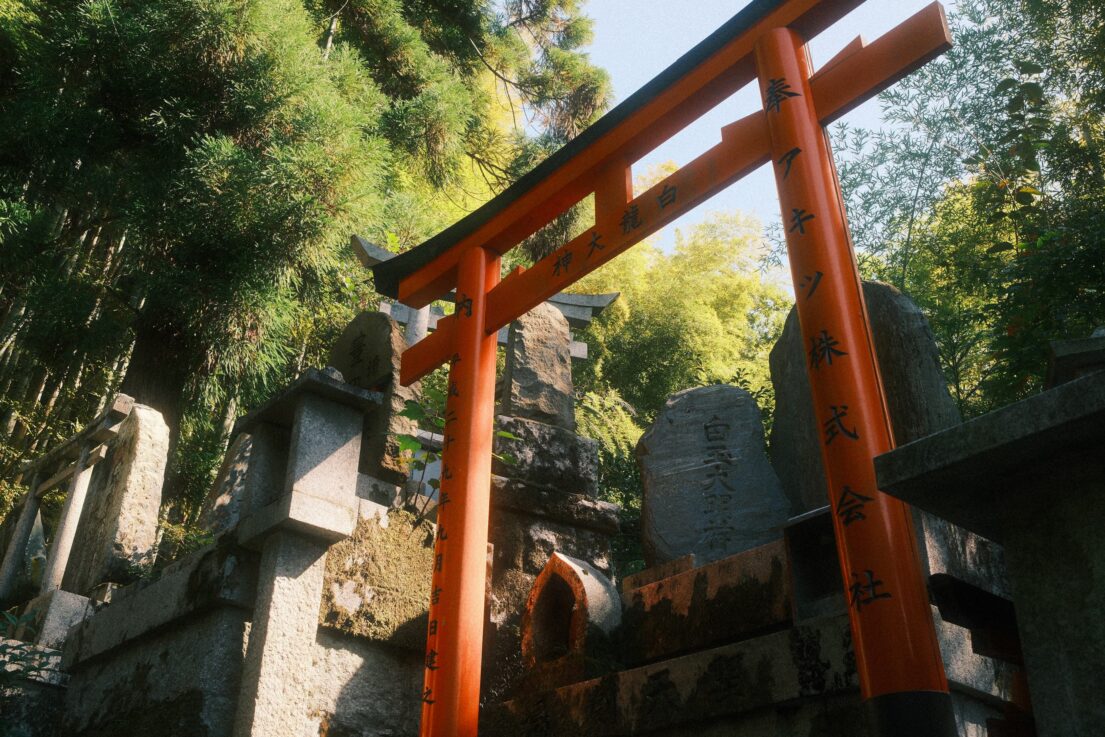
No Comments